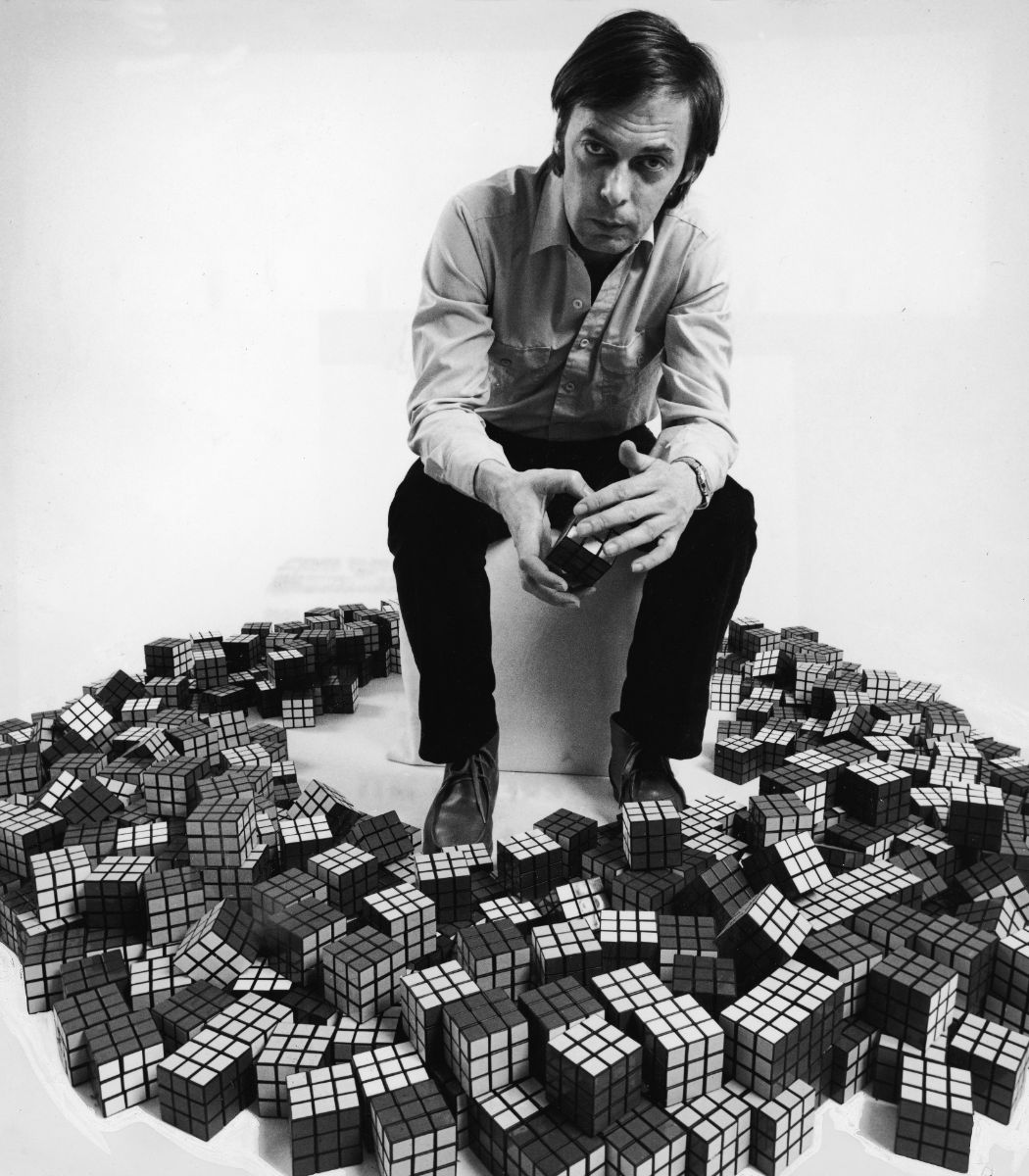Have you ever picked up that colorful, twisting puzzle and wondered who thought of it? It's a rather common thing to do, you know. Well, that amazing brain belongs to a person named erno rubic. His creation, a truly simple yet incredibly complex toy, has captured the imagination of people across the globe for decades. It’s a bit like how a classic card game, perhaps Whist, can bring people together, offering a shared challenge that’s both engaging and a little bit thought-provoking, isn't it?
This Hungarian inventor, a professor of architecture, was actually just trying to solve a problem for his students. He wanted to show them how three-dimensional objects could move and change without falling apart. What he ended up creating was something far more than just a teaching tool. It was a puzzle that would become a household name, a symbol of clever design, and a real test of patience and logic, too.
Today, the puzzle he made is still a favorite, inspiring competitions, art, and even a bit of playful frustration for many. It stands as a testament to how one bright idea can truly spread everywhere, affecting so many different lives. We're going to take a closer look at the person behind this iconic puzzle, exploring his journey and the enduring impact of his most famous invention, you know, the one that twists and turns.
Table of Contents
- Biography of erno rubic
- Personal Details and Bio Data
- The Cube's Lasting Legacy
- Beyond the Iconic Puzzle
- A Puzzle for All Generations
- Frequently Asked Questions About erno rubic
Biography of erno rubic
erno rubic's story is one of curiosity and a deep understanding of spatial relationships. Born in Budapest, Hungary, in 1944, he grew up in a time of significant change. His father was an aircraft engineer, and his mother was a poet. This mix of practical design and creative thought might have, in some way, shaped his unique approach to problems, you know, how he looked at things.
Early Life and Education
He studied at the Budapest University of Technology and Economics, focusing on architecture and later on interior design. It was during his time teaching at the Academy of Applied Arts and Crafts in Budapest that his ideas about three-dimensional geometry really started to take shape. He was trying to figure out how to help his students grasp complex spatial concepts, which is a bit like how a nail technician, during a pedicure session, carefully pays attention to your feet and toenails, trying to understand the small details. He wanted to give them something they could hold, something they could manipulate, so they could truly see how parts could move independently within a larger structure.
The Birth of the Cube
The year 1974 marked a significant moment. erno rubic was working on a way to demonstrate how pieces could move without falling apart. He experimented with wood, paper clips, and rubber bands. The first prototype was, in fact, a wooden cube, with each side made of nine smaller cubes. The challenge was making them turn without separating. He spent weeks, apparently, trying to solve this mechanical puzzle he had created. It was, you know, a very personal project at first, a bit like someone trying to master a new skill, perhaps learning how to remove gel nail polish at home without damaging their nails – it takes patience and a certain kind of careful thought.
His initial idea wasn't for a toy, but rather a teaching tool, as I was saying. He wanted to show movement and structure in a tangible way. The mechanism he came up with was incredibly clever, allowing each face to rotate independently while keeping the entire structure together. It was a breakthrough in design, a bit like discovering the finest in nail care with Tampa Nails' manicure services, where every detail, from nail shaping to vibrant polishing, is thought out to deliver the best results. He eventually colored the sides of his wooden prototype to make the movements easier to follow, and that, more or less, is how the famous puzzle got its look.
Global Impact and Recognition
The cube, originally called the "Magic Cube" (Bűvös kocka) in Hungary, slowly began to gain popularity. It was first sold in Hungarian toy shops in 1977. Its journey to becoming a global phenomenon was not immediate, though. It took a few years and some clever marketing to really take off. By the early 1980s, it had exploded onto the international scene, becoming one of the most popular toys ever. This spread was quite rapid, a bit like how the classic card game Whist, which was the most popular card game in the 18th and 19th centuries, spread from Victorian England around the Western world, even reaching the White House, you know, at its peak.
The cube's popularity led to competitions, books, and even a Saturday morning cartoon. It became a symbol of the 1980s and a genuine cultural icon. erno rubic himself became a rather well-known figure, though he always remained quite humble about his invention, focusing more on the creative process and the joy of problem-solving. He truly believed in the power of play for learning, which is a really good thing.
Personal Details and Bio Data
| Detail | Information |
|---|---|
| Full Name | erno rubic |
| Born | July 13, 1944 |
| Birthplace | Budapest, Hungary |
| Nationality | Hungarian |
| Occupation | Inventor, Architect, Designer, University Professor |
| Known For | Inventing the Rubik's Cube |
| Other Inventions | Rubik's Snake, Rubik's Magic, Rubik's Masterpiece |
| Education | Budapest University of Technology and Economics (Architecture), Academy of Applied Arts and Crafts (Interior Design) |
The Cube's Lasting Legacy
The Rubik's Cube, as it became known globally, is more than just a toy; it's a puzzle that has endured. Its simple appearance hides a truly complex set of possibilities. There are billions of possible combinations, but only one correct solution. This challenge has captivated mathematicians, engineers, and everyday people alike. It's a bit like a game of strategy, you know, like playing Whist, where it’s all about reading the table, anticipating moves, and working in sync without saying a word, trying to figure out the best path forward.
The appeal of the cube lies in its ability to engage the mind. It encourages logical thinking, spatial reasoning, and persistence. For many, solving it is a personal triumph, a moment of real satisfaction. It’s a physical puzzle that requires hands-on interaction, which is a bit different from many digital challenges we face today. This tactile experience is, arguably, part of its charm, too.
Competitions, known as "speedcubing," have grown into a worldwide phenomenon. People train for years to solve the cube in mere seconds, sometimes even blindfolded or with one hand. These events show the incredible human capacity for problem-solving and dedication. It's a rather inspiring thing to witness, actually, the speed and precision involved.
Beyond the Iconic Puzzle
While the cube is certainly his most famous creation, erno rubic has worked on other projects as well. He has designed other puzzles, like the Rubik's Snake and Rubik's Magic, which also play with geometry and transformation. He has also continued his work in architecture and design, always with an eye for how things fit together and how they can be understood. His approach to design is, in a way, very much about finding elegant solutions to complex problems, which is a valuable skill in many fields, of course.
He has also been involved in promoting science and education, especially for younger generations. He believes in fostering creativity and problem-solving skills through play and exploration. This commitment to learning is, you know, a consistent thread throughout his life. He often speaks about the importance of hands-on learning, something that truly helps people grasp ideas in a deeper way. For more insights into the world of design and invention, you might find interesting articles on sites like Smithsonian Magazine's Innovation section, which explores various clever creations and their stories.
A Puzzle for All Generations
The Rubik's Cube has truly transcended generations. Children today still pick it up, just as their parents and grandparents did. Its timeless design and universal appeal mean it continues to be a popular gift and a fun challenge. It's a bit like how some things just never go out of style, whether it’s a perfectly shaped nail from a Tampa Nails manicure or a classic game of Whist that a handful of nostalgics, like me, still enjoy playing, you know.
The puzzle's simple concept – matching colors – is easy to grasp, but its solution is quite difficult, which makes it rather compelling. It offers a clear goal, and the path to achieving it requires thought and persistence. This balance of simplicity and challenge is, arguably, why it has remained so relevant in a world that is always changing. It truly speaks to a fundamental human desire to solve puzzles and bring order to apparent chaos, in a way.
erno rubic's creation reminds us that some of the best ideas come from trying to solve a practical problem. His journey from a classroom aid to a global sensation is quite remarkable. It shows how a single, well-thought-out design can, you know, really make a difference and bring joy to millions. If you're looking for more ways to challenge your mind or explore new hobbies, you can learn more about puzzles and brain teasers on our site, or even find out about other engaging activities that might spark your interest.
Frequently Asked Questions About erno rubic
When was the Rubik's Cube invented by erno rubic?
The Rubik's Cube was invented by erno rubic in 1974. He first created it as a way to help his architecture students understand three-dimensional movement. It was initially called the "Magic Cube" in his home country, Hungary, you know, before it became a global sensation. It took a few years for it to really take off internationally, though.
Is erno rubic still alive?
Yes, erno rubic is still alive today. He continues to be involved in design, architecture, and promoting education, especially in the fields of science and mathematics. He often speaks about the importance of creative thinking and problem-solving, which is a rather consistent theme in his life, you see.
What was erno rubic's main profession?
erno rubic's main profession was as a professor of architecture and design. He taught at the Academy of Applied Arts and Crafts in Budapest. His background in these fields greatly influenced his approach to inventing the cube, as he was always looking for ways to visually represent and manipulate spatial concepts, you know, in a very practical way.



Detail Author:
- Name : Kaycee Monahan
- Username : jdaugherty
- Email : shannon.graham@waelchi.biz
- Birthdate : 1993-07-31
- Address : 24354 Luettgen Lakes Suite 717 Lavernehaven, NC 14063
- Phone : 385-730-0275
- Company : Altenwerth and Sons
- Job : Office Machine and Cash Register Servicer
- Bio : Nesciunt saepe dolorem quisquam omnis inventore quidem adipisci. Vel et qui perferendis ex vel aut. Et rem sed dolore harum.
Socials
facebook:
- url : https://facebook.com/coralie_official
- username : coralie_official
- bio : Omnis exercitationem culpa facilis quo quia.
- followers : 6999
- following : 302
tiktok:
- url : https://tiktok.com/@coraliekeeling
- username : coraliekeeling
- bio : Voluptatum porro et nisi alias ea ullam ut beatae.
- followers : 5861
- following : 760
twitter:
- url : https://twitter.com/coralie.keeling
- username : coralie.keeling
- bio : Et qui ea quae et et laudantium saepe est. Eligendi ut qui dolorem provident harum et quia tenetur. Ipsum animi id voluptatem doloremque.
- followers : 5840
- following : 1769
instagram:
- url : https://instagram.com/coralie_keeling
- username : coralie_keeling
- bio : Et voluptas blanditiis ipsum voluptatem ut culpa ipsam. Fugit ab ad animi sequi.
- followers : 2183
- following : 2271